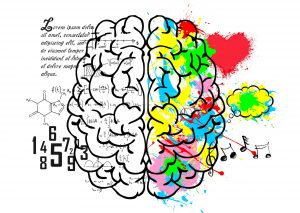Linguists and other scholars have long wondered about the effect of language on thought. Do differences in language create differences in how we think? Or maybe it’s the other way around. Does the way we think affect the evolution of our languages?
This area of study has turned up some fascinating observations.
Do Different Languages Affect the Way We Think?
The overall consensus seems to be … maybe. But it is clear that different cultures with different languages also think differently about the world around them. Whether that is the result of the language is unclear.
Thought and language are not entirely interdependent. We are certainly able to think about things for which we lack words. Sound, smell, and other sensory input doesn’t necessarily enter our thoughts through language.
Experience is also a consideration. Cultures may not have words for concepts or objects outside of their experience. Lack of language doesn’t translate to the inability to perceive and think about new ideas, actions, or materials.
Perhaps the best explanation is that language, culture, and thought combine to create different world-views. Culture and language form filters through which we perceive and think about our experiences.
Examples of Language Affecting Thought
Perhaps the best example is color. Our eyes and brains perceive many more colors than any languages name. Some languages have only a few color names, separating colors into light and dark. Others have names for colors that English lacks.
The result is not a difference in perception; it’s a difference in internal categorization. People who speak different languages group colors differently.
Other examples involve how the structure of a language affects focus. In Australia, one indigenous language uses the words for north, south, east, and west instead of more general terms like “behind” or “next to.” Individuals in this culture are far more directionally oriented than others.
Implications of Language Affecting Thought
When we realize that language, culture, and thought are all connected, it becomes clear that understanding the vocabulary and syntax is not enough to understand a language.
The more we learn about a language and how it filters and categorizes the world of its speakers, the more we understand it. Language learning needs to incorporate these filters.
Studying the way language affects, and is affected by, thought expands our understanding of how different cultures interact with their worlds. It helps us know the concepts considered important and the filters used to express perception.
Translation and Interpretation
Recognizing the interplay of language and thought also emphasizes the need for skilled, professional translators and interpreters. Knowing the words is not enough. A faithful translation requires an understanding of the cultural and thought-related underpinnings of both languages.
Interpreters must be able to recognize and thoroughly understand the impact of language on perception and worldview. A literal interpretation inevitably leaves out cultural markers and filters that change meaning and decrease understanding.
An excellent example can be found in medical translation and interpretation. It is not uncommon for languages to encode terms relating to number and quantity differently. That understanding is critical in medical environments.
There is no easy answer to questions about language affecting thought. And that’s a good thing. Language is as complicated as the society and culture it represents. Recognizing that thought and perception vary with culture and language is another step in making good-faith efforts to communicate.






